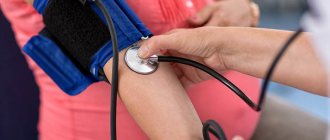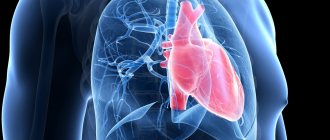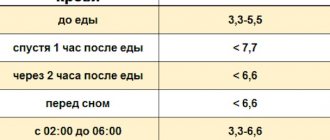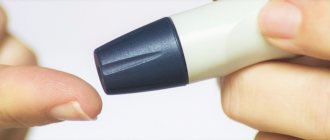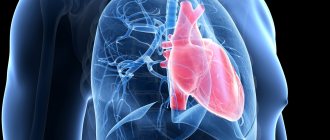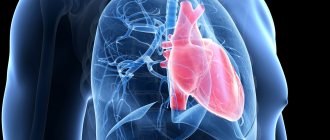Key questions: Definition and concept of diabetes. Normal blood glucose numbers. Glucose in urine. Glycated hemoglobin and fructosamines. C-peptide and other tests.
Diabetes mellitus is a group of diseases in which chronically elevated. Normally, fasting blood glucose levels are maintained between 3.3 and 5.5; after meals – up to 7.8 mmol/l.
There are other units for measuring blood glucose: mg/dL. To convert to mmol/l, the value in mg/dl must be divided by 18.
In the body, blood glucose levels are reduced by the hormone insulin , which is produced in the pancreas.
If little or no insulin is produced, or low-quality insulin is produced, or a person has had their pancreas removed, etc., the level of glucose in the blood rises and the person is diagnosed with diabetes mellitus.
Depending on the cause of the disease, the type of diabetes is determined (type 1, type 2, pancreatogenic, etc.).
In type 1 diabetes, insulin is not produced at all or very little is produced.
In type 2 diabetes mellitus, at the initial stage of the disease, insulin can be produced even in excess quantities, but its effect is weakened (due to a decrease in the body’s sensitivity to insulin or “low-quality” insulin).
In pancreatogenic diabetes, insulin is not produced after pancreatitis or removal of the pancreas.
These are the most common types of diabetes, but not all.
A separate condition is gestational diabetes mellitus, which develops in pregnant women and resolves after pregnancy.
The result is one: high blood glucose levels.
Norms and deviations in blood sugar tests
In a healthy body, the pancreas fully synthesizes insulin, and the cells use it rationally. The amount of glucose formed from incoming food is covered by a person’s energy expenditure. The sugar level in relation to homeostasis (constancy of the internal environment of the body) remains stable. Blood is taken for glucose testing from a finger or a vein. The obtained values may differ slightly (capillary blood values are reduced by 12%). This is considered normal and is taken into account when comparing with reference values.
Reference blood glucose values, that is, average normal values, should not exceed the limit of 5.5 mmol/l (millimoles per liter - a unit of measurement of sugar). Blood is taken exclusively on an empty stomach, since any food that enters the body changes the glucose level towards an increase. The ideal blood microscopy indicators for sugar after eating are 7.7 mmol/l.
Minor deviations from the reference values upward (by 1 mmol/l) are allowed:
- in people who have crossed the sixty-year mark, which is associated with an age-related decrease in cell sensitivity to insulin;
- in women during the perinatal period, due to changes in hormonal status.
The normal blood sugar level for type 2 diabetes under conditions of good compensation is ⩽ 6.7 mmol/l on an empty stomach. Glycemia after eating is allowed up to 8.9 mmol/l. Glucose values with satisfactory compensation of the disease are: ⩽ 7.8 mmol/l on an empty stomach, up to 10.0 mmol/l after meals. Poor diabetes compensation is recorded at levels of more than 7.8 mmol/l on an empty stomach and more than 10.0 mmol/l after meals.
Glucose tolerance testing
When diagnosing diabetes mellitus, a GTT (glucose tolerance test) is performed to determine the sensitivity of cells to glucose. Testing involves taking blood from the patient in stages. Primary - on an empty stomach, secondary - two hours after taking the glucose solution. Based on the assessment of the obtained values, a prediabetic state is identified or diabetes mellitus is diagnosed.
Reference values for glucose tolerance test
Impaired glucose tolerance is prediabetes, otherwise it is a borderline condition. With timely treatment, prediabetes is reversible, otherwise type 2 diabetes develops.
Level of glycosylated hemoglobin (HbA1C) in the blood
Glycated (glycosylated) hemoglobin is formed by the addition of glucose to the protein component of red blood cells (hemoglobin) during non-enzymatic glycosylation (without the participation of enzymes). Since hemoglobin does not change its structure for 120 days, the HbA1C analysis allows you to assess the quality of carbohydrate metabolism in retrospect (for three months). Glycated hemoglobin values change with age. In adults, the indicators are:
| Standards | Limit values | Not permissible excess of the norm | |
| up to 40 years old | ⩽ 6,5% | up to 7% | >7.0% |
| 40+ | ⩽ 7% | up to 7.5% | > 7,5% |
| 65+ | ⩽ 7,5% | up to 8% | >8.0%. |
For diabetics, analysis of glycosylated hemoglobin is one of the methods of disease control. Using the HbA1C level, the degree of risk of complications is determined, and the results of the prescribed treatment are assessed. The sugar norm for type 2 diabetes and the deviation of indicators correspond to the normative and abnormal values of glycated hemoglobin.
| Blood sugar | On an empty stomach | After meal | HbA1C |
| Fine | 4.4 – 6.1 mmol/l | 6.2 – 7.8 mmol/l | > 7,5% |
| acceptable | 6.2 – 7.8 mmol/l | 8.9 – 10.0 mmol/l | > 9% |
| unsatisfactory | more than 7.8 | more than 10 | > 9% |
The relationship between glucose levels, cholesterol and body weight
Type 2 diabetes mellitus is almost always accompanied by obesity, hypertension and hypercholesterolemia. When performing a venous blood test in diabetics, cholesterol levels are assessed, with a mandatory distinction between the amount of low-density lipotropes (“bad cholesterol”) and high-density lipotropes (“good cholesterol”). BMI (body mass index) and blood pressure (blood pressure) indicators are also determined.
With good compensation of the disease, normal weight is recorded, according to height, and slightly exceeded blood pressure measurement results. Unsatisfactory (poor) compensation is a consequence of the patient’s regular violation of the diabetic diet, incorrect therapy (the glucose-lowering drug or its dosage is incorrectly selected), and non-compliance by the diabetic with the work and rest regime. The glycemic level reflects the psycho-emotional state of the diabetic. Distress (constant neuropsychological tension) causes an increase in glucose levels in the blood.
Stages of type 2 diabetes and sugar levels
In people with diabetes, sugar levels determine the stage of severity of the disease:
- Compensated (initial) stage. The compensatory mechanism ensures adequate susceptibility to the therapy. It is possible to normalize the concentration of glucose in the blood through diet therapy and minimal doses of hypoglycemic (sugar-lowering) medications. The risks of complications are negligible.
- Subcompensated (moderate) stage. A worn-out pancreas works at its limit, and difficulties arise when compensating for glycemia. The patient is transferred to constant treatment with glucose-lowering drugs in combination with a strict diet. There is a high risk of developing vascular complications (angiopathy).
- Decompensation (final stage). The pancreas stops producing insulin and glucose levels cannot be stabilized. The patient is prescribed insulin therapy. Complications progress, and the risk of a diabetic crisis develops.
Indicators of glycated hemoglobin and blood sugar levels by disease stage
Causes of the disease
The hereditary factor is of primary importance in the development of diabetes mellitus. Predisposition to the disease is transmitted through the maternal line in 5% of cases and through the father in 10% of cases. If both parents have diabetes, the risk of developing pathology reaches 100%.
Also, the main causes of non-insulin-dependent diabetes include:
- inactivity and overeating, leading to obesity - if body weight is 50% higher than normal, then the risk of increased glucose increases to 60%;
- poor nutrition.
The main causes of insulin-dependent diabetes:
- autoimmune diseases (lupus, autoimmune thyroiditis, glomerulonephritis, hepatitis);
- viral infections that destroy pancreatic beta cells responsible for the production of insulin (chickenpox, rubella, hepatitis, mumps).
Hyperglycemia
Hyperglycemia is an increase in the concentration of glucose in the blood. A person who does not have diabetes can develop three types of hyperglycemia: nutritional, after consuming a significant amount of fast carbohydrates, emotional, caused by an unexpected nervous shock, hormonal, arising from a violation of the functional abilities of the hypothalamus (part of the brain), thyroid gland or adrenal glands. Diabetics are characterized by the fourth type of hyperglycemia – chronic.
Clinical symptoms in type 2 diabetes
How to lower blood sugar?
Hyperglycemia has several degrees of severity:
- mild – level 6.7 – 7.8 mmol/l
- average – > 8.3 mmol/l;
- severe – > 11.1 mmol/l.
A further increase in sugar levels indicates the development of precoma (from 16.5 mmol/l) - a state of progression of symptoms with inhibition of the functions of the central nervous system (central nervous system). In the absence of medical care, the next stage is diabetic coma (from 55.5 mmol/l) - a condition characterized by areflexia (loss of reflexes), lack of consciousness and lack of reactions to external stimuli. In a coma, symptoms of respiratory and heart failure increase. A comatose state is a direct threat to the patient's life.
Psychosomatic symptoms
A rise in blood sugar is accompanied by the following symptoms:
- dysania (sleep disorder), characterized by drowsiness after eating and insomnia at night;
- CFS (chronic fatigue syndrome);
- cephalgic syndrome (headache);
- permanent thirst (polydipsia);
- frequent urge to urinate (pollakiuria);
- memory and vision impairment;
- increased appetite (polyphagia);
- decreased concentration;
- increased sweating (hyperhidrosis);
- decreased regenerative abilities of the skin.
When glucose concentration increases, the rhythmic functioning of the heart is usually disrupted and blood pressure increases.
Signs of the disease
The main symptoms and signs of diabetes are similar for both types of the disease:
- polydipsia - severe thirst;
- polyuria – frequent heavy urination, including at night (nocturia);
- Polyphagia – excessive appetite and constant hunger.
But there are also differences. For example, with type 1 diabetes, patients lose weight (despite a good appetite), and with type 2, they gain weight.
Diabetes mellitus in men is often accompanied by sexual problems: erectile dysfunction, early ejaculation, infertility.
Hypoglycemia
No less dangerous for a diabetic is the state of hypoglycemia (a decrease in glucose concentration to a critical level). The sugar level at which loss of consciousness occurs is 2.6 mmol/l. For a diabetic patient, this condition threatens hypoglycemic coma. In type 2 diabetes, an accelerated decrease in glucose levels occurs for the following reasons:
- non-compliance with diet;
- physical activity exceeding the patient's capabilities;
- excessive consumption of alcoholic beverages;
- incorrect dose of glucose-lowering medications taken (overdose);
- the presence of a hormonally active tumor (insulinoma).
The main symptoms of hypoglycemia are:
- dizziness, decreased blood pressure, cephalgic syndrome;
- psychoexcitability, unreasonable irritability and anxiety;
- decreased visual acuity and slowed speech;
- tremors in the limbs (tremor) and loss of coordination (ataxia);
- absent-mindedness;
- neuropsychological weakness (asthenia);
- convulsive syndrome;
- abnormal heart rhythm (tachycardia);
- nausea and vomiting.
Important! A sharp decrease in sugar causes extinction of brain activity (stuporous state) and fainting, followed by the development of coma. Lack of emergency medical care during an attack of hypoglycemia can cost a diabetic his life.
Glycemic control regimen for type 2 diabetes mellitus
Measuring blood sugar for diabetics is a mandatory procedure, the frequency of which depends on the stage of the disease. To avoid a critical increase in glucose levels, measurements are taken with stable compensation of diabetes - every other day (three times a week), during therapy with hypoglycemic drugs - before meals and 2 hours after, after sports training or other physical overload, with polyphagia, during the period of administration into the diet of a new product - before and after its use.
To prevent hypoglycemia, sugar is measured at night. In the decompensated stage of type 2 diabetes, the worn-out pancreas loses its ability to produce insulin, and the disease becomes insulin-dependent. During insulin therapy, blood sugar measurements are taken several times a day.
How to accurately determine your sugar level
You can reliably determine your blood sugar level at home (using a glucometer) or in the hospital (by taking a biochemical blood test). In the first case, you need to purchase a device and take measurements. The procedure is done in literally 1 minute.
The analysis cannot be carried out at any time and in any condition, since the results will be inaccurate. Before donating blood, you must go at least 12 hours without food or drink, including:
- juices (even without sugar);
- tea;
- coffee.
Also during this period you should avoid chewing gum, physical and emotional stress (including entertainment, entertainment, sports). It is recommended to drink only water. To make it easier to withstand this period, you need to not eat anything in the evening, and immediately donate blood for analysis in the morning.
Attention!
2 days before the analysis, exclude liver and kidneys, alcoholic beverages from the diet, limit meat, fish, tea and coffee. Also, during this time you should not engage in physical activity.
"Diary of a Diabetic"
To control the disease, simply measuring sugar is not enough. It is necessary to regularly fill out the “Diabetes Diary”, which records:
- glucometer readings;
- time: eating, measuring glucose levels, taking hypoglycemic medications;
- name of: foods eaten, drinks drunk, medications taken;
- the number of calories consumed per serving of food;
- dosage of hypoglycemic drug;
- level and duration of physical activity (workouts, housework, gardening, walks, etc.);
- the presence of infectious diseases and medications taken to eliminate them;
- the presence of stressful situations;
- In addition, blood pressure measurements must be recorded.
Since one of the main tasks for a patient with type 2 diabetes is weight loss, weight indicators are entered into the diary daily. Detailed self-monitoring allows you to track the dynamics of diabetes. Such monitoring is necessary to determine the factors influencing the instability of blood sugar, the effectiveness of the therapy, and the effect of physical activity on the well-being of a diabetic. After analyzing the data from the Diabetes Diary, the endocrinologist, if necessary, can adjust the diet, dose of medications, and intensity of physical activity. Assess the risks of developing early complications of the disease.
The “self-monitoring diary” can be in paper or electronic form
Results
With effective compensation for type 2 diabetes, including diet therapy and medication treatment, normal blood sugar has the following indicators:
- fasting glucose data should be within the range of 4.4 – 6.1 mmol/l;
- measurement results after eating do not exceed 6.2 – 7.8 mmol/l;
- the percentage of glycosylated hemoglobin is not more than 7.5.
Unsatisfactory compensation leads to the development of vascular complications, diabetic coma, and death of the patient.
Urine analysis for diabetes
Normal urine test results do not exclude diabetes, and therefore are informative only in cases of pronounced disease.
| Indicators | Changes |
| Color | Urine becomes light, almost colorless |
| Smell | Has a strong acetone smell |
| Acidity | Reduced (less than 4pH) |
| Density | With kidney damage it decreases (less than 1010 g/l), with hyperglycemia it increases (above 1030 g/l) |
| Protein | Increases (albumin up to 300 mg per day), normally does not fall out |
| Glucose | Drops out if the blood concentration reaches above 10 mmol/liter |
| Ketone bodies | Fall out (normally they should not be there) |


